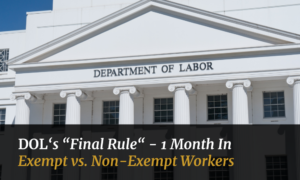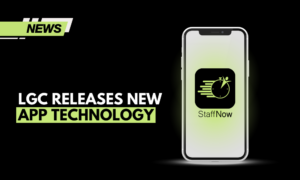It might surprise you to learn that many entry- and mid-level positions at major companies, like Marriott Hotels, don’t require a college degree. This trend has become common in the hospitality industry due to its emphasis on skills over formal education. But the shift toward skills-based hiring is gaining momentum across various industries.
In the first part of our skills-based hiring series, we explored this hiring technique in-depth, with insights from a leading Ivy League school. Now, in the second part of this series, we’ll take a deeper dive into how this trend is reshaping the way managers approach Applicant Tracking Systems (ATS), job descriptions and more.
We’ll cover:
- Why skills-based hiring has faced challenges in the past
- Where to start making changes to your hiring practices
Let’s start by examining the roadblocks that have held back this approach.
Why Skills-Based Hiring Has Struggled in the Past
When a company undergoes a large, systematic change, there’s always a degree of risk. Whether that risk involves loss of profits, shareholder concerns, or other disruptions, the discomfort that comes with trying something new often prevents changes from reaching their full potential.
This is one of the main reasons why skills-based hiring hasn’t been fully embraced by many HR departments. Hiring from degree programs provides a sense of security. Many hiring managers believe that candidates with college degrees offer more than just technical skills—they bring important soft skills that are honed through their educational experiences.
Additionally, fear of losing clients, profits, or even internal talent can prevent companies from fully adopting skills-based hiring. Large-scale changes like these can be time-consuming, and many businesses can’t afford to slow down. When hiring needs are urgent, companies may feel pressure to stick with their traditional processes rather than risk a slower, unfamiliar approach.
While these concerns are valid, the biggest reason skills-based hiring fails is the lack of a solid plan upfront, combined with insufficient training post-hire. When certain positions don’t require immediate education or certification—but will in the future—hiring someone with potential won’t work unless they’re given continuous opportunities to upskill. This is where sponsored education programs, professional development, and in-house training come into play. To make the greatest impact, every phase of the process, including post-hire, needs to be thoughtfully planned.
So how can you avoid these common missteps? It’s time to reflect on the systems you have in place.
Evaluating The Systems Already in Place
Hiring for skills isn’t just about casting a wider net and hoping for more diverse candidates. It’s about intentionality. Ask yourself: What skills are truly relevant to this job, and which ones can be learned during the adjustment period?
Two critical areas to reassess in your hiring process are:
- Job descriptions
- Applicant Tracking Systems (ATS)
Job Descriptions
If you’re transitioning to a skills-based approach, the first place to start is your job descriptions. Let’s say you’re hiring a General Manager for a restaurant. One candidate has a college degree in Management, Business Administration, or a related field and has spent years learning how to run a business. Another candidate has a high school diploma and five years of hands-on experience as a Shift Supervisor and Store Manager in retail and food service.
Both candidates are qualified in different ways, but is your job description excluding the one without a degree?
A job description designed for skills-based hiring should:
- Highlight both the hard and soft skills needed for success
- Distinguish between skills needed from Day 1 and those that can be learned through upskilling
- Include details about company culture and how the candidate will fit in
- Focus on responsibilities and performance expectations
By refining your job descriptions and removing unnecessary qualifications, you’ll significantly widen your pool of qualified candidates. Not only will you see more applicants, but the diversity of their experiences and skills will also expand.
Applicant Tracking Systems (ATS)
Once your job descriptions reflect your new hiring goals, the next step is to evaluate your ATS.
Automating resume reviews saves time and energy for large recruitment efforts, but it’s not perfect. Don’t blindly trust your ATS algorithm without understanding how it filters candidates. You might miss out on great candidates who have the right skills but don’t meet certain outdated qualifications flagged by your system.
For example, does your ATS accept candidates who meet the required years of experience but don’t have specific degrees or certifications? If certain certifications are essential, your ATS should filter for those, but if you’ve updated your job descriptions to focus on skills, your ATS needs to be adjusted accordingly. Otherwise, you’ll end up with the same candidates as before, despite your efforts to broaden the pool.
Evaluating your internal operations is key to making a lasting change. If you’ve tried transitioning to skills-based hiring before and it didn’t work, take a moment to reflect on why. Was the timing wrong? Was the implementation rushed or incomplete? When you’re ready to try again (or for the first time), begin by evaluating your existing systems. Do your job descriptions align with your hiring goals? Is your ATS set up to identify the right candidates?
Moving Forward
Once you’ve fine-tuned your internal processes, you’re ready to take the next steps in transforming your hiring approach. If you enjoyed this part of our skills-based hiring series, stay tuned for the final part of this series, where we’ll explore creative ways to enhance your application process and invest in your employees post-hire.
In other news…
Have you followed us on social media?
To download our new staffing technology, check out our Linktree!
About LGC
Since 2003 LGC has been building connections between businesses with staffing needs and job seekers looking for new opportunities. Our range of solutions includes temporary and permanent placements (and everything in between) for a variety of industries. With offices located nationwide, we can tap into a dynamic pool of talented professionals. We have a passion for creating partnerships that last and work hard every day to ensure both clients and candidates reach their employment goals.





